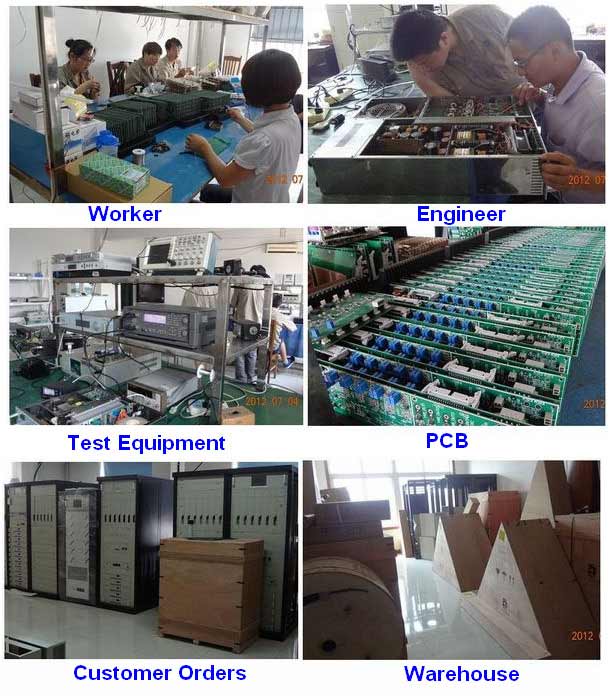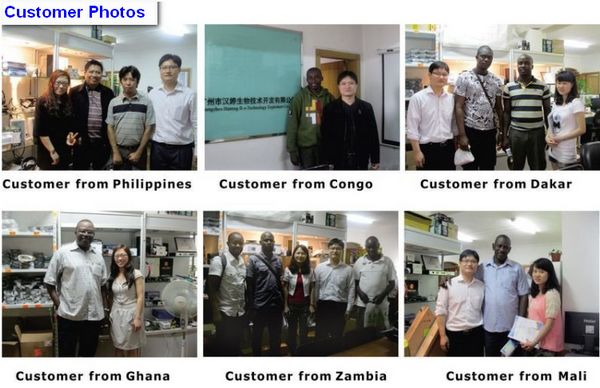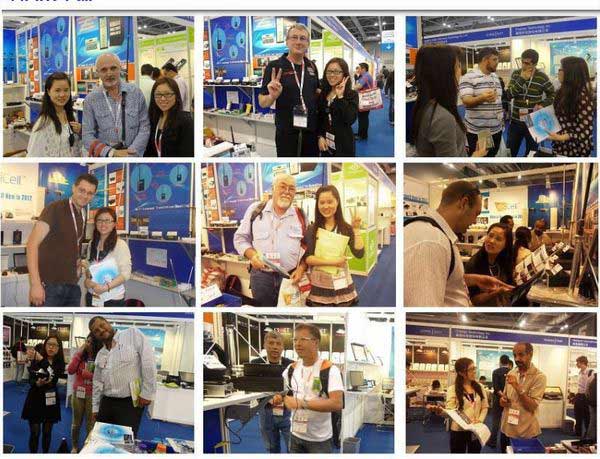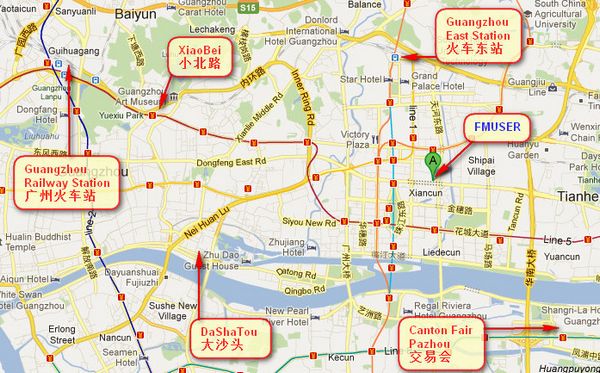1. Basic concepts
1) Streaming media
Streaming media is also called streaming media. It refers to businesses that use a video delivery server to send out programs as data packets and deliver them to the network. After the user decompresses the data through the decompression device, the program will be displayed as before transmission.
A series of related packages in this process is called a "flow". Streaming media actually refers to a new media delivery method, not a new media.
After the full application of streaming media technology, people can directly voice input in online chat; if you want to see each other’s face and expression, as long as both sides have a camera; if you see the product of interest on the Internet, click it, the explainer The video of the product and the product will pop out; more realistic video news will also appear.
The so-called streaming media refers to the media format played on the Internet by means of streaming transmission. Such as: audio, video or multimedia files. Streaming media does not download the entire file before playing, but only stores the first part of the content in memory. The data stream of streaming media is transmitted and played at any time, but there is some delay at the beginning. The key technology of streaming media is streaming.
The streaming transmission method divides the entire multimedia files such as A/V and 3D into compressed packages through a special compression method, and transmits them continuously and in real time from the video server to the user's computer.
In a streaming system, users do not have to wait until the entire file is downloaded as in the download method, but only need a few seconds or tens of seconds to start the delay to use the decompression device on the user's computer ( Hardware or software) decompress the compressed A/V, 3D and other multimedia files for playback and viewing. At this time, the remaining part of the multimedia file will continue to be downloaded in the server in the background.
Compared with the simple download method, this streaming method of downloading and playing multimedia files not only greatly shortens the startup delay, but also greatly reduces the demand for system cache capacity.
2. Streaming
The traditional way of transmitting multimedia information such as audio and video over the network is to completely download it before playing it. The downloading often takes several minutes or even hours.
Streaming media technology can be used to realize streaming. The sound, video or animation is continuously and uninterruptedly transmitted from the server to the user's computer. The user does not have to wait until the entire file has been downloaded, but only a few seconds or ten seconds. Start the delay to watch. When audio, video, etc. are played on the user's machine, the remaining part of the file will continue to be downloaded from the server.
If the file transfer is regarded as a process of receiving water, the past transfer method is like a rule for users. You must wait until a bucket of water is full before you can use it. This waiting time is naturally affected by the size of the water flow and the bucket. The size of the impact.
Streaming, for example, turn on the tap and wait for a short while, and the water will flow out continuously, and it can be used at any time. Therefore, regardless of the size of the water flow or the size of the bucket, the user can Use water at any time.
When streaming, time-based media such as sound, video, or animation are continuously and real-time transmitted from the audio and video server to the user's computer. The user does not have to wait until the entire file is downloaded, but only a few seconds or tens of seconds to start the delay. Can be watched. When time-based media such as sound is played on the client, the remaining part of the file will continue to be downloaded from the server in the background. Streaming not only shortens the start-up delay ten times, one hundred times, but also does not require too much buffer capacity. Streaming avoids the disadvantage that users have to wait for the entire file to be downloaded from the Internet to watch it.
The general term for the technology of transmitting media through the network. Implementation:
①Sequential streaming is sequential downloading. While downloading files, users can watch online media. At a given moment, users can only watch the part that has been downloaded, and cannot jump to the first part that has not been downloaded. Sequential streaming Unlike real-time streaming, the speed of the user's connection is adjusted during transmission.
Since a standard HTTP server can send files in this form and does not require other special protocols, it is often referred to as HTTP streaming.
Sequential streaming is more suitable for high-quality short clips, such as credits, credits, and advertisements. Because the part of the file that is viewed before playback is downloaded losslessly, this method guarantees the final quality of the movie. This means that the user must experience a delay before viewing, especially for slower connections. For distributing short clips via a modem, sequential streaming is very practical, allowing the creation of video clips at a higher data rate than a modem. Despite the delay, after all, it allows you to publish higher-quality video clips.
Sequential streaming files are placed on standard HTTP or FTP servers, which are easy to manage and basically have nothing to do with firewalls.
But sequential streaming is not suitable for long clips and videos with random access requirements, such as lectures, speeches, and presentations. It also does not support live broadcasting. Strictly speaking, it is an on-demand technology.
②Real-time streaming refers to ensuring that the media signal bandwidth matches the network connection so that the media can be viewed in real time.
Real-time streaming is different from HTTP streaming. It requires a dedicated streaming media server and transmission protocol. Real-time streaming is always delivered in real-time, which is especially suitable for on-site events and also supports random access. Users can fast forward or rewind to watch the content before or after.
Theoretically, the real-time stream can not be stopped once it is played, but in reality, periodic pauses may occur. Real-time streaming must match the connection bandwidth, which means that the image quality is poor when connected at modem speeds. Moreover, the information lost due to errors is ignored, and the video quality is poor when the network is congested or problems occur. To ensure video quality, sequential streaming may be better.
Real-time streaming requires specific servers, such as QuickTime Streaming Server, RealServer and Windows Media Server. These servers allow you to have more levels of control over media sending, so system settings and management are more complicated than standard HTTP servers.
Real-time streaming also requires special network protocols, such as RTSP (Realtime Streaming Protocol) or MMS (Microsoft Media Server). These protocols sometimes have problems when there is a firewall, causing users to not be able to see real-time content in some locations.
Generally speaking, if the video is a real-time broadcast, or a streaming media server is used, or a real-time protocol such as RTSP is applied, it is real-time streaming. If an HTTP server is used, the file is sent through the sequential stream. Which transmission method you use depends on your needs. Of course, streaming files also support full downloading to the hard disk before playing.
2. The influence of streaming media
Because streaming media technology has broken through the limitation of network bandwidth to the transmission of multimedia information to a certain extent, it is widely used in online live broadcasting, online advertising, video-on-demand, distance education, telemedicine, video conferencing, corporate training, e-commerce, etc. field.
Streaming media technology makes it possible for traditional media to open up a broader space on the Internet. The Internet of radio and television media programs is more convenient, and it is easier for listeners and viewers to order programs online, and online audio and video live broadcasts will also be widely used.
Streaming media technology turns the "push" dissemination of traditional media into the "pull" dissemination of the audience. The audience no longer passively accepts programs from radio and television, but receives the information they need at their own convenient time. . This will improve the status of the audience to a certain extent, enable them to take the initiative in news dissemination, and also enable their needs to have a more direct impact on the activities of the news media.
The widespread use of streaming media technology will also blur the boundaries between radio, television and the Internet. The Internet is not only an auxiliary and extension of radio and television, but also a powerful competitor to them.
Using streaming media technology, the network will provide new audio and video program styles, and will also form new business methods, such as fee-based on-demand services.
Leveraging the advantages of traditional media, using the advantages of online media, and maintaining good competition and cooperation between media are the road to the development of the future network and the road to the development of traditional media in the future.
3. the principle of streaming media technology
The implementation of streaming requires caching.
Because the Internet uses packet transmission as the basis for intermittent asynchronous transmission, for a real-time A/V source or stored A/V file, they must be broken down into many packets during transmission. Since the network changes dynamically, each packet is selected. The route may be different, so the time delay to reach the client is also different, and even the first data packet may arrive later. To this end, a cache system is used to compensate for the effects of delay and jitter, and to ensure the correct sequence of data packets, so that the media data can be output continuously without pauses in playback due to temporary network congestion.
Usually the cache capacity is not large, because the cache uses a circular linked list structure to store data: by discarding the content that has been played, the stream can reuse the free cache space to cache the subsequent unplayed content.
The realization of streaming requires a suitable transmission protocol. Because TCP requires more overhead, it is not suitable for transmitting real-time data.
In the implementation scheme of streaming transmission, HTTP/TCP is generally used to transmit control information, and RTP/UDP is used to transmit real-time sound data.
The process of streaming transmission is generally like this: After the user selects a streaming media service, the Web browser and the Web server use HTTP/TCP to exchange control information, so that the real-time data that needs to be transmitted can be retrieved from the original information; then the client The web browser on the machine starts the A/VHelper program, and uses HTTP to retrieve the relevant parameters from the Web server to initialize the Helper program. These parameters may include directory information, encoding type of A/V data, or server address related to A/V retrieval.
The A/VHelper program and the A/V server run the real-time flow control protocol (RTSP) to exchange the control information required for A/V transmission. Similar to the functions provided by CD players or VCRs, RTSP provides methods to manipulate commands such as play, fast forward, fast rewind, pause, and record. The A/V server uses the RTP/UDP protocol to transmit A/V data to the A/V client program (generally, the client program can be regarded as equivalent to the Helper program). Once the A/V data arrives at the client, the A/V client program can be played Output.
4. streaming media related technologies
1) Smart streaming technology
Automatically detect network conditions and adjust the properties of audio and video to the best, so that users receive media streams that match their network speeds to obtain the best user experience.
2) Splitting technology
Generally only used in live broadcasts. The sending server sends the media stream to multiple receiving servers distributed in various places, and the client can access the server nearby to obtain a higher quality media stream while reducing bandwidth usage. Push streaming is the process of pushing live content to the server; pulling streaming is the process of pulling live content already on the server with a designated address.
Caching technology
To solve the problem of out-of-sequence of data packets caused by asynchronous network, network delay and jitter, data packets are first cached locally, and the caching system uses a circular linked list structure to discard the content that has been played to prevent buffer overflow.
Content Delivery Network (CDN) technology
A content overlay network built on the IP network, through the introduction of active content management, global load balancing and content caching, etc., the streaming media content requested by the user is published to the network edge closest to the user, thereby providing response speed and reducing the backbone The pressure of the network.
5. streaming media transmission mode
The reason why streaming media can realize the real-time playback of multimedia data is that it adopts a special network control protocol and data transmission mechanism. The server has a special streaming media publishing system, and the client has a special player. Both parts need to cache data through the data buffer area.
Unlike ordinary packet switching networks, the data in the buffer area of the streaming media system is dynamic during data transmission, and can also be switched. The data enters and exits the buffer in a stack, without waiting for the data to reach the client. After the computer is released, the data in the data buffer is "flowing", and the playback of the data needs to maintain a stable data output speed. The buffer is required to provide corresponding data at any time. The player, if there is no corresponding data, there will be a pause during the content playback and a screen treaty.
The former situation generally occurs because the network transmission speed cannot keep up with the playback speed of the data, and data underflow occurs, while the latter situation occurs because the network transmission speed is too fast, exceeding the playback speed, and there is no Data overflow caused by proper transmission control.
6. the realization of live broadcast
1) Streaming media protocol used in live broadcast
RTMP, the acronym for Real Time Messaging Protocol. The protocol is based on TCP and is a protocol family, including RTMP basic protocol and RTMPT/RTMPS/RTMPE and many other variants. RTMP is a network protocol designed for real-time data communication. It is mainly used for audio, video and data communication between the Flash/AIR platform and a streaming media/interactive server that supports the RTMP protocol. RTMP is based on flash and cannot be played in the iOS browser, but the real-time performance is better than HLS.
HLS, HTTP Live Streaming (HTTP live streaming technology), Apple's dynamic bit rate adaptive technology. Mainly used for audio and video services of PC and Apple terminals. Including an m3u(8) index file, TS media fragment file and key encryption string file.
2) Module division of live broadcast
Video recording terminal: Generally it is the audio and video input device on the computer or the camera or microphone on the mobile phone. At present, the mobile phone video is mainly used on the mobile terminal. Technology: webRTC (use: H5 video recording)
Video player: It can be the player on the computer, the Native player on the mobile phone, and the video tag of H5. At present, the Native player on the mobile phone is the mainstay. Technology: HLS protocol or RTMP protocol (use: video playback), ffmpeg (use: mobile terminal video decoding when using RTMP protocol)
Video server side: generally an nginx server, used to receive the video source provided by the video recording side, and provide streaming services to the video player side at the same time. Technology: RTMP protocol (purpose: upload video stream), nginx rtmp-module or SRS (simple-rtmp-server) (purpose: streaming server)



|
|
|
|
How far(long) the transmitter cover?
The transmission range depends on many factors. The true distance is based on the antenna installing height , antenna gain, using environment like building and other obstructions , sensitivity of the receiver, antenna of the receiver . Installing antenna more high and using in the countryside , the distance will much more far.
EXAMPLE 5W FM Transmitter use in the city and hometown:
I have a USA customer use 5W fm transmitter with GP antenna in his hometown ,and he test it with a car, it cover 10km(6.21mile).
I test the 5W fm transmitter with GP antenna in my hometown ,it cover about 2km(1.24mile).
I test the 5W fm transmitter with GP antenna in Guangzhou city ,it cover about only 300meter(984ft).
Below are the approximate range of different power FM Transmitters. ( The range is diameter )
0.1W ~ 5W FM Transmitter :100M ~1KM
5W ~15W FM Ttransmitter : 1KM ~ 3KM
15W ~ 80W FM Transmitter : 3KM ~10KM
80W ~500W FM Transmitter : 10KM ~30KM
500W ~1000W FM Transmitter : 30KM ~ 50KM
1KW ~ 2KW FM Transmitter : 50KM ~100KM
2KW ~5KW FM Transmitter : 100KM ~150KM
5KW ~10KW FM Transmitter : 150KM ~200KM
How to contact us for the transmitter?
Call me +8618078869184 OR
Email me [email protected]
1.How far you want to cover in diameter ?
2.How tall of you tower ?
3.Where are you from ?
And we will give you more professional advice.
About Us
FMUSER.ORG is a system integration company focusing on RF wireless transmission / studio video audio equipment / streaming and data processing .We are providing everything from advice and consultancy through rack integration to installation, commissioning and training.
We offer FM Transmitter, Analog TV Transmitter, Digital TV transmitter, VHF UHF Transmitter, Antennas, Coaxial Cable Connectors, STL, On Air Processing, Broadcast Products for the Studio, RF Signal Monitoring, RDS Encoders, Audio Processors and Remote Site Control Units, IPTV Products, Video / Audio Encoder / Decoder, designed to meet the needs of both large international broadcast networks and small private stations alike.
Our solution has FM Radio Station / Analog TV Station / Digital TV Station / Audio Video Studio Equipment / Studio Transmitter Link / Transmitter Telemetry System / Hotel TV System / IPTV Live Broadcasting / Streaming Live Broadcast / Video Conference / CATV Broadcasting system.
We are using advanced technology products for all the systems, because we know the high reliability and high performance are so important for the system and solution . At the same time we also have to make sure our products system with a very reasonable price.
We have customers of public and commercial broadcasters, telecom operators and regulation authorities , and we also offer solution and products to many hundreds of smaller, local and community broadcasters .
FMUSER.ORG has been exporting more than 15 years and have clients all over the world. With 13 years experience in this field ,we have a professional team to solve customer's all kinds of problems. We dedicated in supplying the extremely reasonable pricing of professional products & services. Contact email : [email protected]
Our Factory

We have modernization of the factory . You are welcome to visit our factory when you come to China.

At present , there are already 1095 customers around the world visited our Guangzhou Tianhe office . If you come to China , you are welcome to visit us .
At Fair

This is our participation in 2012 Global Sources Hong Kong Electronics Fair . Customers from all over the world finally have a chance to get together.
Where is Fmuser ?

You can search this numbers " 23.127460034623816,113.33224654197693 " in google map , then you can find our fmuser office .
FMUSER Guangzhou office is in Tianhe District which is the center of the Canton . Very near to the Canton Fair , guangzhou railway station, xiaobei road and dashatou , only need 10 minutes if take TAXI . Welcome friends around the world to visit and negotiate .
Contact: Sky Blue
Cellphone: +8618078869184
WhatsApp: +8618078869184
Wechat: +8618078869184
E-mail: [email protected]
QQ: 727926717
Skype: sky198710021
Address: No.305 Room HuiLan Building No.273 Huanpu Road Guangzhou China Zip:510620
|
|
|
|
English: We accept all payments , such as PayPal, Credit Card, Western Union, Alipay, Money Bookers, T/T, LC, DP, DA, OA, Payoneer, If you have any question , please contact me [email protected] or WhatsApp +8618078869184
-
PayPal.  www.paypal.com www.paypal.com
We recommend you use Paypal to buy our items ,The Paypal is a secure way to buy on internet .
Every of our item list page bottom on top have a paypal logo to pay.
Credit Card.If you do not have paypal,but you have credit card,you also can click the Yellow PayPal button to pay with your credit card.
---------------------------------------------------------------------
But if you have not a credit card and not have a paypal account or difficult to got a paypal accout ,You can use the following:
Western Union.  www.westernunion.com www.westernunion.com
Pay by Western Union to me :
First name/Given name: Yingfeng
Last name/Surname/ Family name: Zhang
Full name: Yingfeng Zhang
Country: China
City: Guangzhou
|
---------------------------------------------------------------------
T/T . Pay by T/T (wire transfer/ Telegraphic Transfer/ Bank Transfer)
First BANK INFORMATION (COMPANY ACCOUNT):
SWIFT BIC: BKCHHKHHXXX
Bank name: BANK OF CHINA (HONG KONG) LIMITED, HONG KONG
Bank Address: BANK OF CHINA TOWER, 1 GARDEN ROAD, CENTRAL, HONG KONG
BANK CODE: 012
Account Name : FMUSER INTERNATIONAL GROUP LIMITED
Account NO. : 012-676-2-007855-0
---------------------------------------------------------------------
Second BANK INFORMATION (COMPANY ACCOUNT):
Beneficiary: Fmuser International Group Inc
Account Number: 44050158090900000337
Beneficiary's Bank: China Construction Bank Guangdong Branch
SWIFT Code: PCBCCNBJGDX
Address: NO.553 Tianhe Road, Guangzhou, Guangdong,Tianhe District, China
**Note: When you transfer money to our bank account, please DO NOT write anything in the remark area, otherwise we won't be able to receive the payment due to government policy on international trade business.
|
|
|
|
* It will be sent in 1-2 working days when payment clear.
* We will send it to your paypal address. If you want to change address, please send your correct address and phone number to my email [email protected]
* If the packages is below 2kg,we will be shipped via post airmail, it will take about 15-25days to your hand.
If the package is more than 2kg,we will ship via EMS , DHL , UPS, Fedex fast express delivery,it will take about 7~15days to your hand.
If the package more than 100kg , we will send via DHL or air freight. It will take about 3~7days to your hand.
All the packages are form China guangzhou.
* Package will be sent as a "gift" and declear as less as possible,buyer don't need to pay for "TAX".
* After ship, we will send you an E-mail and give you the tracking number.
|
|
|
For Warranty .
Contact US--->>Return the item to us--->>Receive and send another replace .
Name: Liu xiaoxia
Address: 305Fang HuiLanGe HuangPuDaDaoXi 273Hao TianHeQu Guangzhou China.
ZIP:510620
Phone: +8618078869184
Please return to this address and write your paypal address,name,problem on note: |
|

























